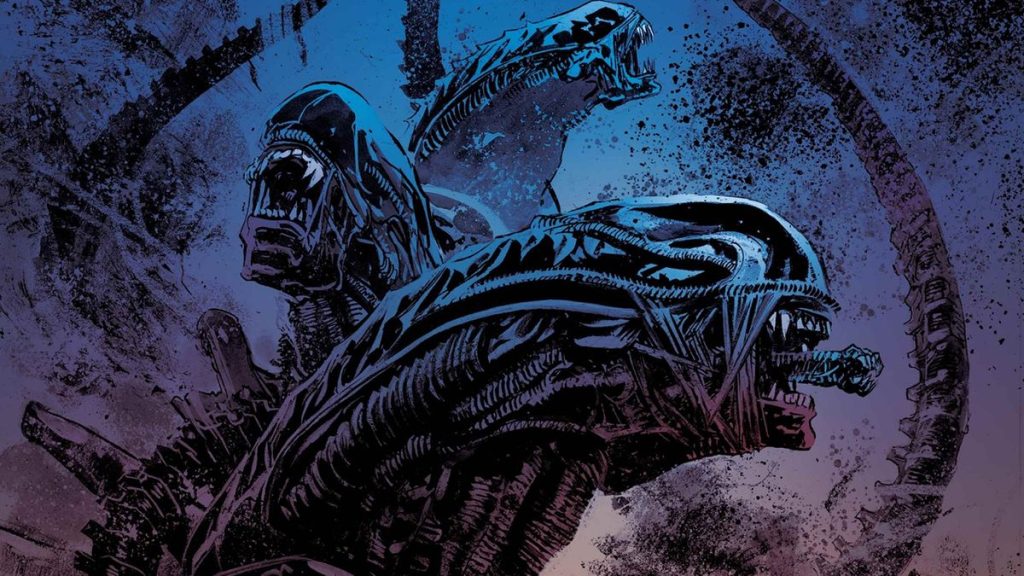
Best Alien comic books of all time (Image Credit: Space.com)
Alien: Romulus is the shot in the arm the Alien movie franchise desperately needed, and FX’s Alien: Earth, its first-ever TV show, could keep the momentum going next year. If you’re dying to learn more about the Xenomorphs and experience wildly different tales of horror, we’ve put together our list of the best Alien comic books of all time.
For decades, it was Dark Horse Comics who had the rights to both Alien and Predator in the realm of comic books, putting out several series and one-shots that were well worth our time. With Disney’s takeover of Fox’s empire and all its properties, the opportunity to move both franchises to Marvel (also owned by the House of Mouse) came, and things changed for the first time in forever. So far, Marvel Comics’ take on both franchises has been interesting to say the least, and you definitely shouldn’t overlook the comics they have put out so far.
If you’re looking for a refresher before (or after) checking out Romulus, or simply want to watch the entire sci-fi horror series for the first time, our up-to-date Alien streaming guide has you covered. Of course, we haven’t forgotten about gamers, and we also have some thoughts on what the best Alien games of all time are.
10. Aliens: Sacrifice
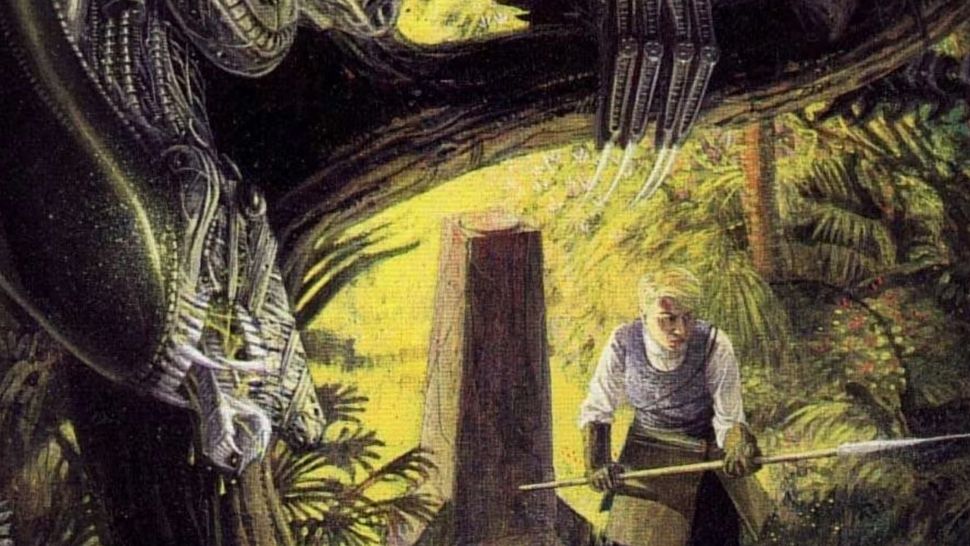
- Release year: 1993
- Authors and artists: Peter Milligan, Paul Johnson, Ellie De Ville
Originally published as part of the Aliens magazine, Aliens: Sacrifice is often overlooked, but it’s a killer comic that fans shouldn’t skip. The story follows a survivor of a deadly spaceship crash on an unknown desolate planet. There, a village has been terrorized by a Xenomorph, so she’s instantly locked into a battle for survival while also facing her own demons.
Paul Johnson’s art is a highlight — the exact kind of stuff you don’t see much of in big comic books — and that alone gave (and still gives) Aliens: Sacrifice a ton of value, but beyond that Peter Milligan’s sharp and emotional writing carry the story. This slim, four-part story is the sort of standalone tale that would’ve made a fine Alien movie.
9. Aliens: Dead Orbit
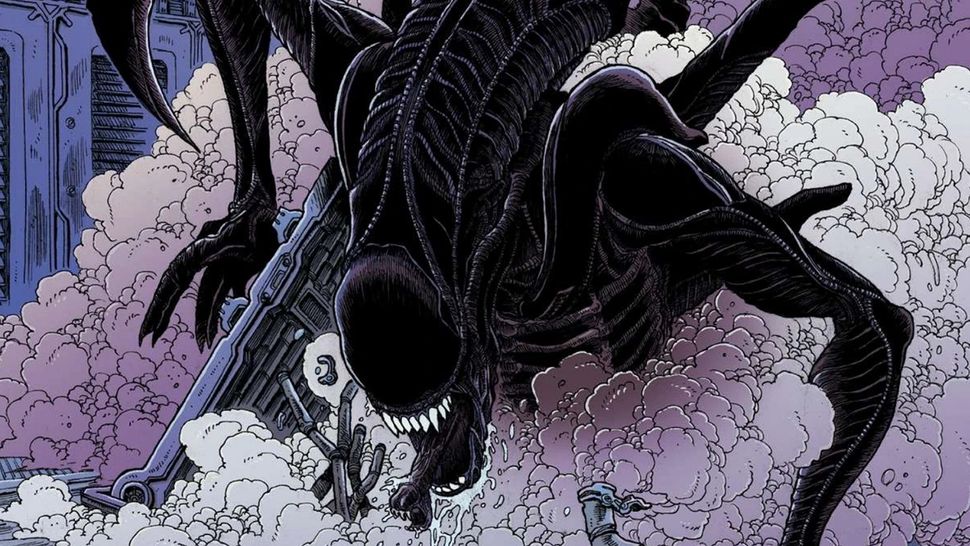
- Release year: 2017
- Authors and artists: James Stokoe
Aliens: Dead Orbit belongs to the latter era of Dark Horse Comics’ work on the famous franchise. Released as a four-issue limited series in 2017, it’s a bit of a riff on the first movie, with the crew of the Sphacteria fuel depot facing off against the deadly species with limited resources.
Completely written and drawn by James Stokoe, Dead Orbit feels like a very personal comic book that just happens to take place in the Alien universe. Sure, some plot beats are a bit too familiar, and the setting isn’t exactly refreshing, but the in media res take on the narrative of each issue spices things up, and the striking art gives off the hopeless vibes the story is going for.
8. Aliens: Outbreak
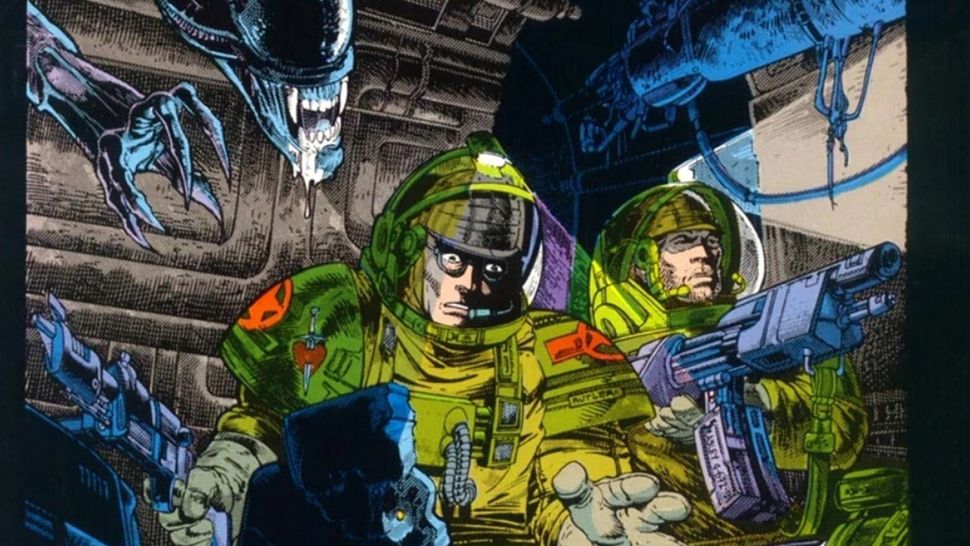
- Release year: 1988
- Authors and artists: Mark Verheiden, Mark A. Nelson, Ron Randall, Willie Schubert
After the adaptation of the first Alien movie, which wasn’t handled by Dark Horse, Aliens: Outbreak (originally released as Aliens) was the first-ever comic book series based on the property. Even after all these years, it remains an especially compelling follow-up to Aliens, regardless of whether you’re a fan of Alien 3 or not.
The original version of the comic book is a direct sequel to Aliens, but, much like its two follow-ups, it was later heavily re-edited to fit with the events of Alien 3 after its release in 1992. The series was a tremendous hit for Dark Horse, still an infant company in 1988, and continued the stories of Hicks and Newt several years after the events of James Cameron’s sequel, completely ignoring their deaths (as well as Ripley’s) and instead bringing the Xenomorph menace to Earth, as the underwhelming threequel was yet to release.
7. Aliens: Music of the Spears
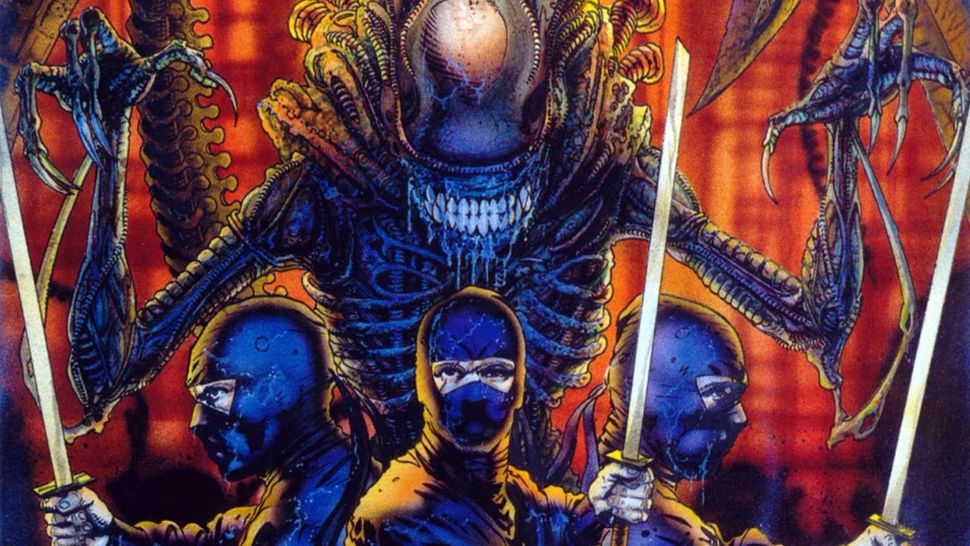
- Release year: 1994
- Authors and artists: Chet Williamson, Tim Hamilton, Timothy Bradstreet, Matt Webb, Clem Robins
Music of the Spears could be considered one of the wildest and more off-beat Alien comic books ever released. It follows an under-appreciated composer named Damon Eddington, who wants to hatch a Xenomorph egg to raise the creature in captivity and capture its terrifying sounds to create a musical masterpiece.
Things only get weirder when ninjas get involved (we won’t spoil how) and the Xenomorph’s is given the name Mozart. The world-building here is outstanding, going beyond the musical element and Eddington’s close environment, painting a dystopian New York City in the year 2124 that’s also been influenced by the discovery of the Xenomorph. This isn’t your average Alien story, and it found enough success to be turned into a full novel by Yvonne Navarro two years later.
6. Alien: Bloodlines, Revival & Icarus
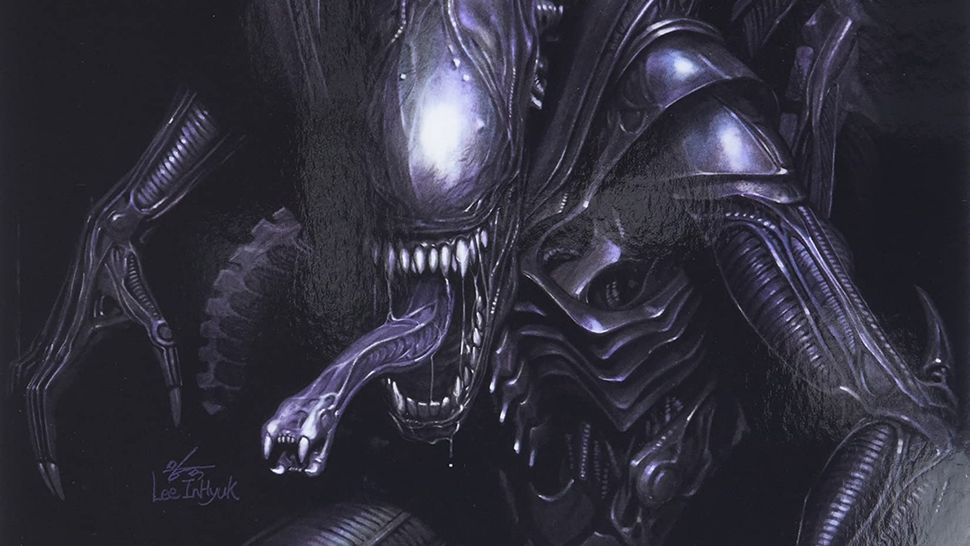
- Release year: 2021-2022
- Authors and artists: Phillip Kennedy Johnson, Salvador Larroca, Julius Ohta, GURU-eFX, Yen Nitro, Clayton Cowles
Originally titled Alien Vol. 1, Alien: Bloodlines marked the fresh start of Marvel’s first three-story arc for the Alien franchise, which was completed with Revival and Icarus. It does kick off like a typical Alien storyline, but things quickly get stranger than anyone expected going in.
Salvador Larroca’s art wasn’t to everyone’s tastes, yet Phillip Kennedy Johnson’s writing more than makes up for it. More importantly, this trilogy convinced fans from the get-go that new, exciting stuff could be done with the property under Marvel’s umbrella, and the mystery of the biomechanical ‘Goddess’ is a nice twist on the more psychological and strangely erotic side of the Alien movies.
5. Aliens: Salvation
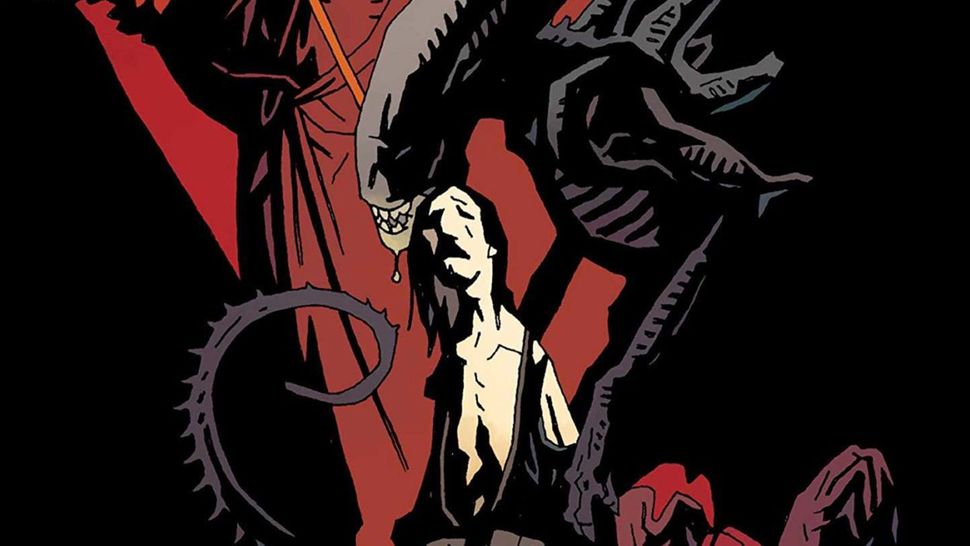
- Release year: 1993
- Authors and artists: Dave Gibbons, Mike Mignola, Kevin Nowlan, Matt Hollingsworth, Clem Robins
Dave Gibbons and Mike Mignola working together on Alien? Did that happen? Yes, and it gave us a killer one-shot comic book. The premise is simple: a crewman and his captain abandon their ship, the Nova Maru, crash-landing on a planet where they soon realize they haven’t escaped the ship’s terrifying cargo.
The kicker here is that Selkirk, the main character, is an intensely God-fearing man, a trait which informs many of his actions throughout the horror adventure. While the story does tie into the larger Alien mythos, it’s the religious undertones, unique approach to it’s characters, and Mignola’s striking art that elevate this one into the higher league of Alien comic books.
4. Aliens vs. Predator

- Release year: 1990
- Authors and artists: Randy Stradley, Phil Norwood, Chris Warner, Mark Propst, Brian Stelfreeze, Karl Story, Stine Walsh, Robert Campanella, Monika Livingston, Pat Brosseau
A five-issue comic book series – preceded by a single short story – Aliens vs. Predator opened up a whole new universe of crossover possibilities, as both sci-fi horror icons mixed together remarkably well. While many more notable AvP comic books arrived in the years that followed, the original story arc remains a must-read for any fan of the two sci-fi icons.
The main character, Machiko Noguchi, soon became a fan-favorite, later starring in Aliens vs. Predator: War and Three World War too. The story is easy to follow, but feels grand and was almost adapted into a movie years before Paul W.S. Anderson’s take on the concept.
3. Aliens: Genocide
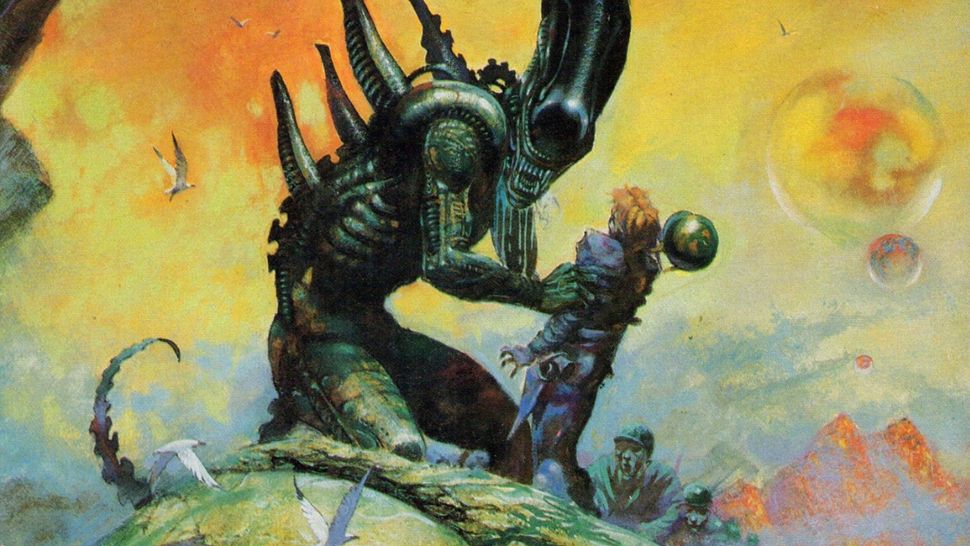
- Release year: 1991
- Authors and artists: Mike Richardson, John Arcudi, Damon Willis, Karl Story, Arthur Suydam, Jim Massara
While Genocide could be seen as a worthy standalone story, it’s actually a follow-up to Female War, the finale of the trilogy that began with Outbreak. With Earth recovering from the Xenomorph infestation, billionaire Daniel Grant leads an expedition to the alien homeworld, which sounds like the worst idea in the history of bad ideas.
Betrayal happens (we won’t spoil in which direction or how), Grant’s dark secrets are revealed, and the Xenomorph homeworld is ravaged by civil war going when the humans arrive; the ‘classic’ Xenos versus a red variant of the species. Aliens: Genocide has all the good stuff found in the best Alien comics, and continues the ‘alternate timeline’ story that began with Outbreak, culminating in a big finale also full of personal stakes.
2. Aliens: Labyrinth
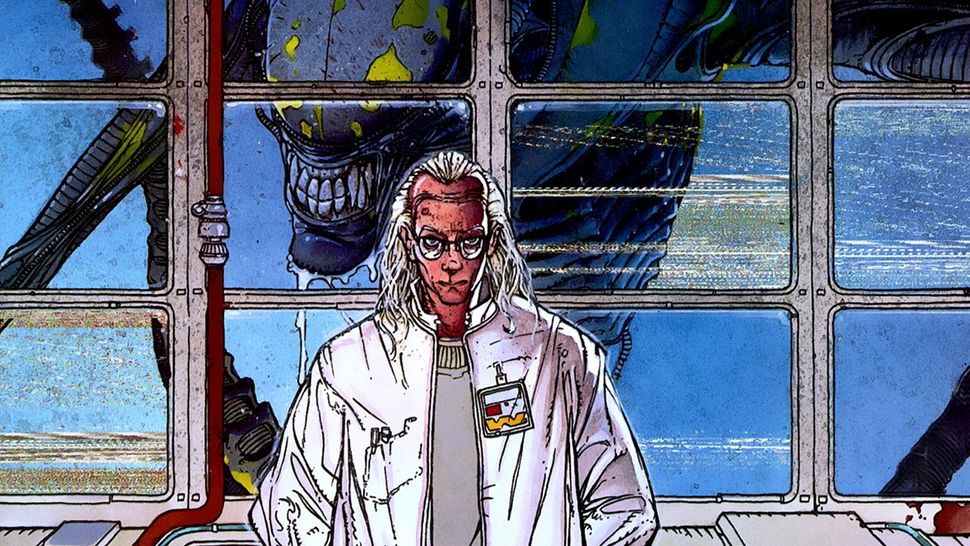
- Release year: 1993
- Authors and artists: Jim Woodring, Kilian Plunkett, Matt Hollingsworth, Ellie De Ville
Aliens: Labyrinth takes place aboard a deep space research station, which is kind of the perfect setting for sci-fi horror stories. Jim Woodring’s four-issue series had a far more specific angle, however, since it follows Dr. Paul Church’s studies of the Xenomorph’s behavioral responses and how they relate to humans when they’re captured. Yes, there’s a bit of Alien: Resurrection before Alien: Resurrection in this one, but the story is more character-driven and personal.
There are some connections to past Alien comics in Labyrinth, but this one’s largely a standalone tale that gets ‘up close and personal’ with the Xenomorphs while digging deep into each character and their clashing motivations. Instead of a bombastic, fan-pleasing rollercoaster ride, Woodring chose to focus on compelling drama that goes beyond the deadly alien species, and that made this series an all-timer.
1. Aliens: Nightmare Asylum
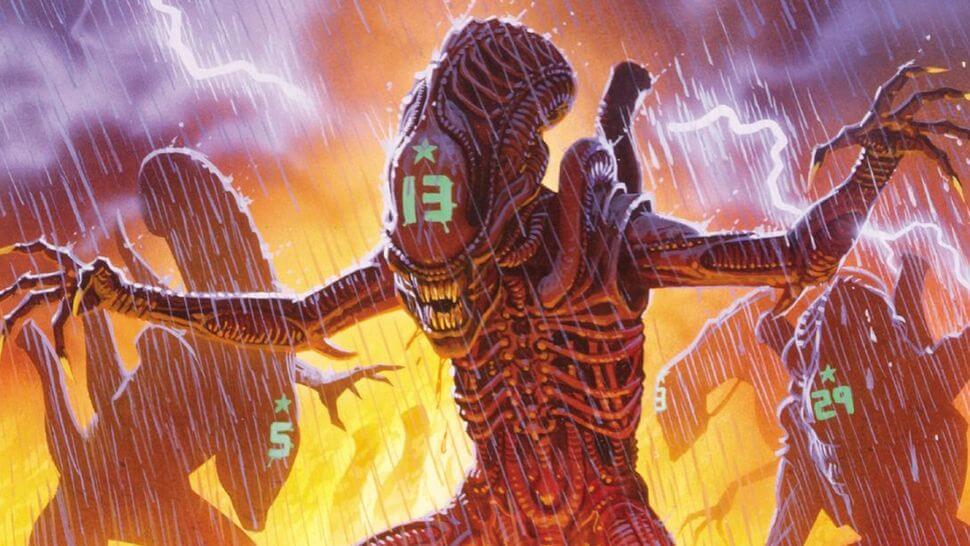
- Release year: 1989
- Authors and artists: Mark Verheiden, Den Beauvais, Roger Casselman, Bob Pinaha, J. David Jackson
Nightmare Asylum is the follow-up to Outbreak and precedes Female War. It lands the top spot on our list because it’s a fantastic second act of the post-Aliens storyline which gave Newt and Hicks a future (before Alien 3 came out and killed them off).
It’s got Colonial Marines, an Earth overrun by Xenomorphs, and a crazed military figure that still wants to use trained aliens in battle. In a post-Aliens era, what more could you ask for? Nightmare Asylum has the scope and relentless pacing that Female War retained, yet it’s laser-focused on the idea of the Xenomorph used as a weapon by humanity’s worst, which is an idea that’s been suggested time and again in the movies.





